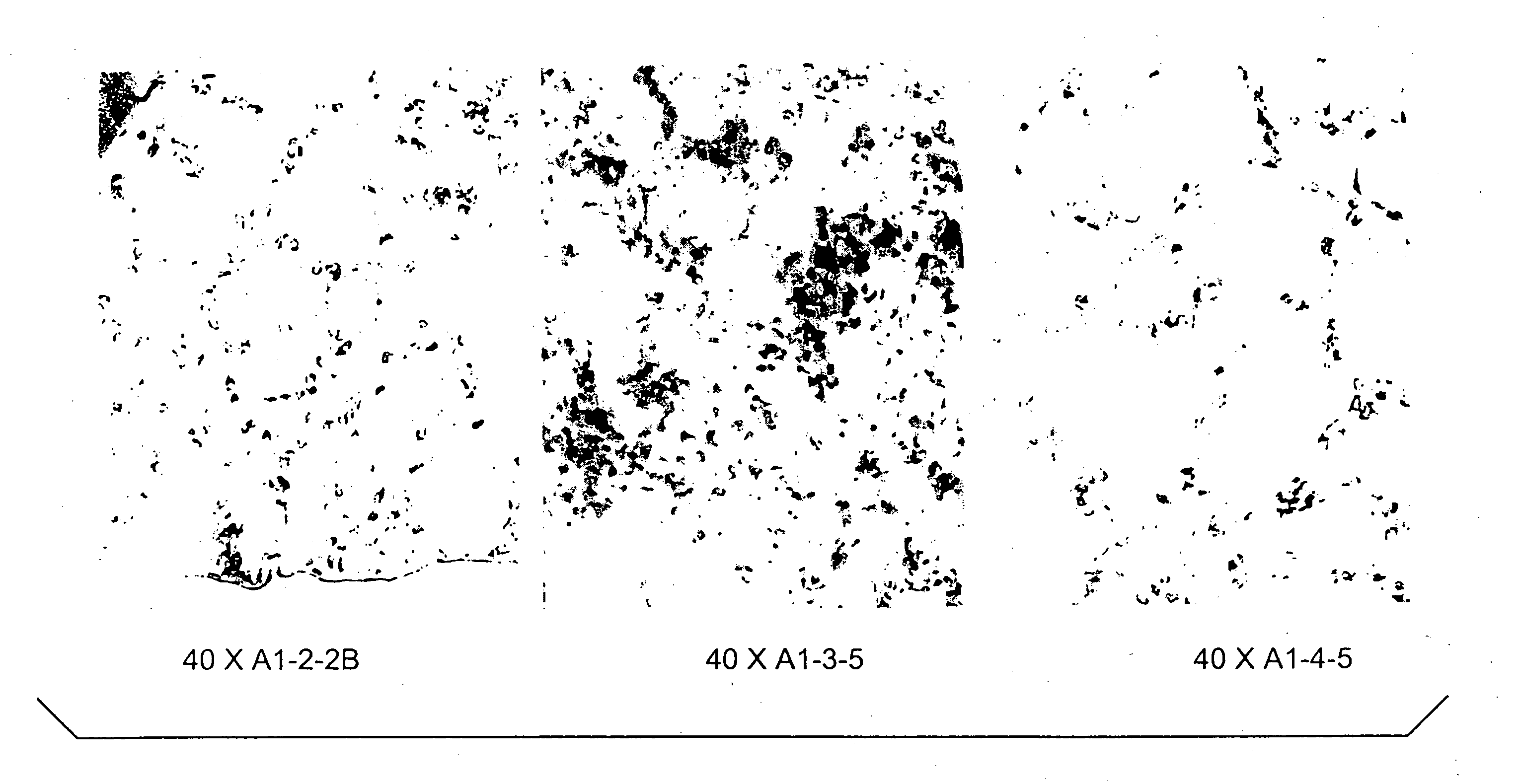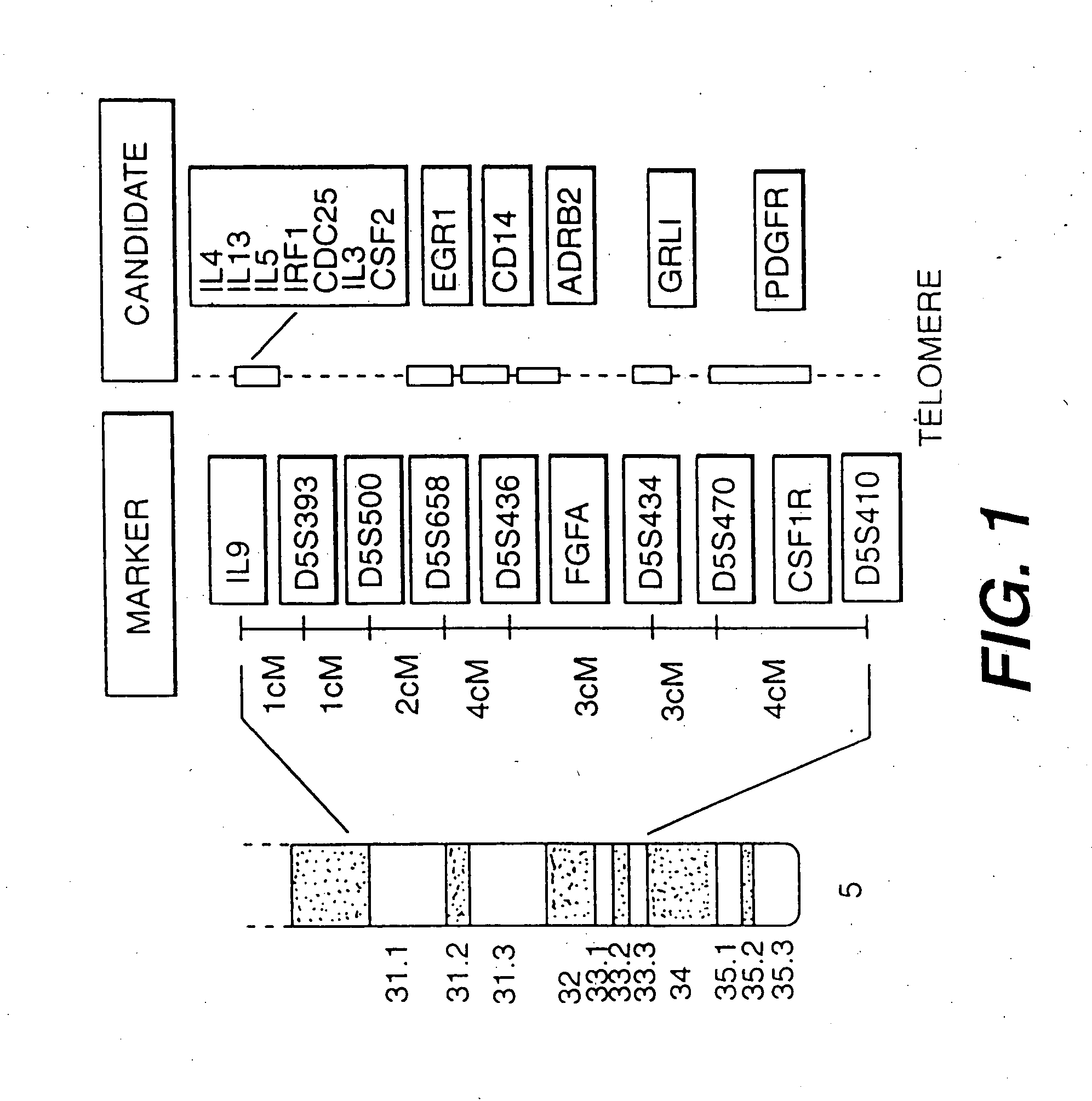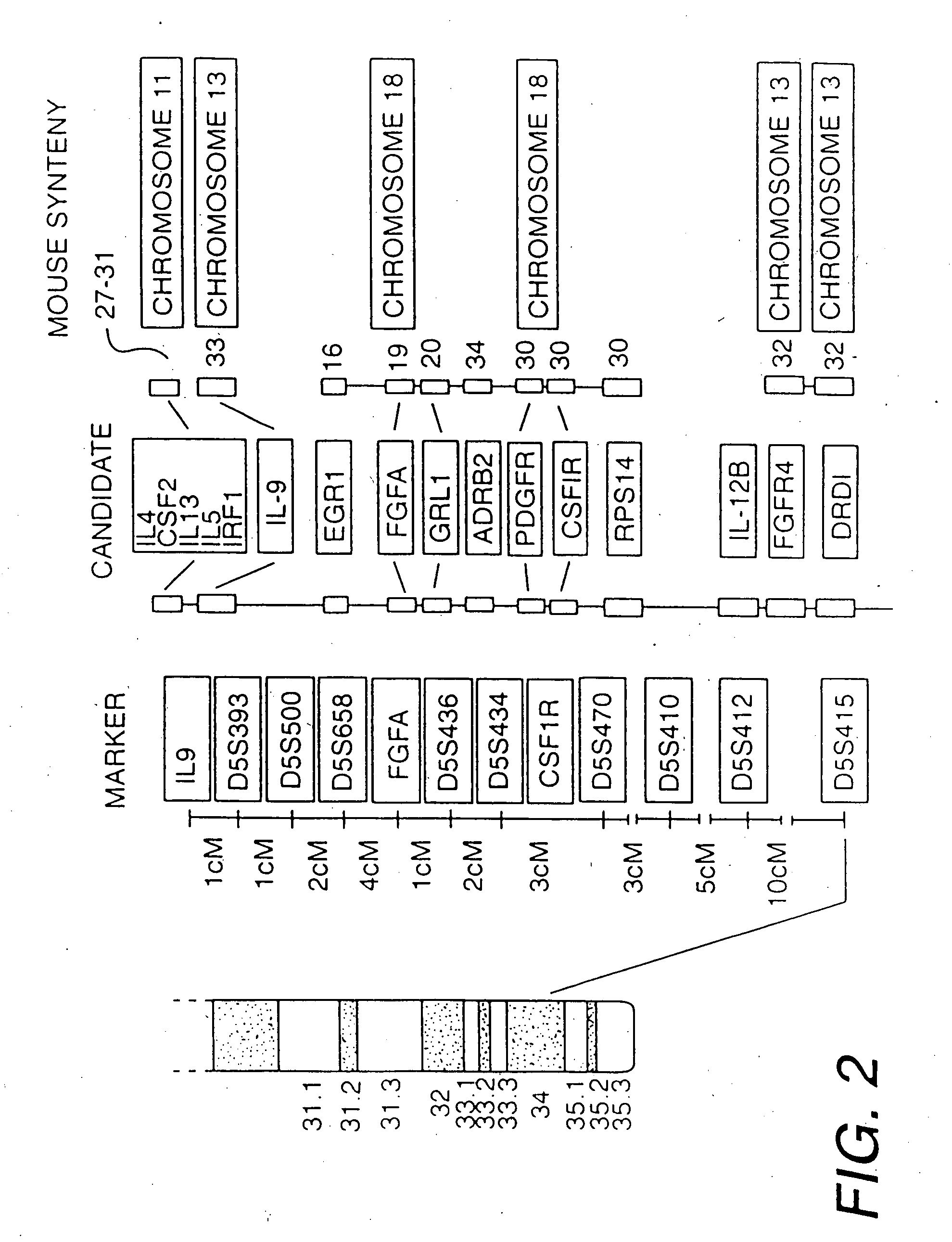Interleukin-9 mutein peptides
a technology of interleukin-9 and mutein, which is applied in the direction of depsipeptides, peptide/protein ingredients, powder delivery, etc., can solve the problems of allergic inflammation, huge burden on health care resources, damage to surrounding tissues, etc., and achieves the effects of typifying allergic inflammation, elevated serum total ige, and elevated cell counts
- Summary
- Abstract
- Description
- Claims
- Application Information
AI Technical Summary
Benefits of technology
Problems solved by technology
Method used
Image
Examples
example 1
Linkage Analysis Between BHR and Murine Chromosome 13
[0155] As an aid in dissecting the complex genetic determinants of BHR, applicant has developed murine models that differ in their genetic susceptibility to various bronchoconstrictor stimuli. Inbred animal models using recombinant inbred strains [BXD] can facilitate ongoing studies in humans to determine the number of genes regulating susceptibility to BHR, the magnitude of their affect, and their precise chromosomal location. In particular, localizing in an animal model a gene determining susceptibility to a critical risk factor for asthma may aid in the positional cloning of this gene in humans.
[0156] Although the gene[s] predisposing to BHR and atopy had not yet been identified prior to this invention, chromosome 5q31-q33 was known to be syntenic with portions of mouse chromosomes 11, 13, and 18. FIG. 2 illustrates the syntenic regions containing numerous positional candidates that may potentially play a role in airway infla...
example 2
Identification of an IL-9 Gene Polymorphism
[0162] Applicant demonstrated conserved linkage between the mouse and humans for BHR. These data suggest that variation in the functions of this gene or DNA sequence may be important in regulating bronchial responsiveness in the mouse. Using the methods described above, a unique product of the correct size was identified by gel electrophoresis for each of the exons of human IL-9 after PCR. A single polymorphism was identified by SSCP in exon 5 of the human IL-9 gene. Direct DNA sequence analysis demonstrated a C to T nucleotide substitution at position 3365 [GenBank accession number M30136] of the human IL-9 gene as the cause of the novel SSCP conformer. This DNA sequence change predicts a nonconservative substitution of a methionine [hydrophobic] for a threonine [hydrophilic] at amino acid 117 of the IL-9 protein.
[0163] Exon 5 codes for this segment of the protein which is within the most highly conserved interval of human IL-9 as compar...
example 3
IL-9 Receptor Expression and Ligand Binding Assay
[0167] Purified recombinant Thr IL-9, Met IL-9, and compounds potentially resembling Met IL-9 in structure or function are radiolabelled using the Bolton and Hunter reagent as described in Bolton A E, and Hunter W M, Biochem J. 133:529-539(1973). This material is labeled to high specific activity of 2,300 cpm / fmol or greater. Human K562 and MO7e cells are grown and resuspended at 30° C. in 0.8 ml of Dulbecco's modified Eagle's medium supplemented with 10% (vol / vol) fetal bovine serum, 50 mM 2-mercaptoethanol, 0.55 mM L-arginine, 0.24 mM L-asparagine, and 1.25 mM L-glutamine. K562 or MO7e cells are used as is or after transfection with the IL-9 receptor gene as described below. Plasmid DNA containing the full length IL-9 receptor is cloned into pRC / RSV plasmid (In Vitrogen, San Diego) and purified by centrifugation through CsCl2. Plasmid DNA (50 micrograms) is added to the cells in 0.4 cm cuvettes just before electroporation. After a ...
PUM
| Property | Measurement | Unit |
|---|---|---|
| pH | aaaaa | aaaaa |
| pH | aaaaa | aaaaa |
| pH | aaaaa | aaaaa |
Abstract
Description
Claims
Application Information
 Login to View More
Login to View More - R&D
- Intellectual Property
- Life Sciences
- Materials
- Tech Scout
- Unparalleled Data Quality
- Higher Quality Content
- 60% Fewer Hallucinations
Browse by: Latest US Patents, China's latest patents, Technical Efficacy Thesaurus, Application Domain, Technology Topic, Popular Technical Reports.
© 2025 PatSnap. All rights reserved.Legal|Privacy policy|Modern Slavery Act Transparency Statement|Sitemap|About US| Contact US: help@patsnap.com



